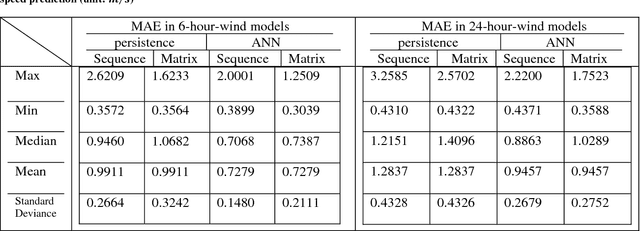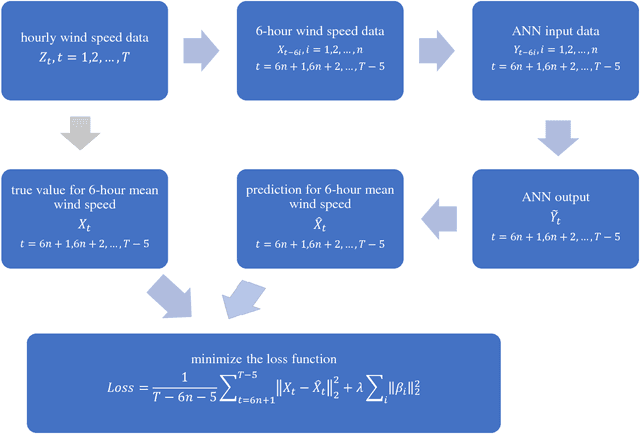David J. Farnham
Spatial-temporal wind field prediction by Artificial Neural Networks
Dec 13, 2017



Abstract:The prediction of near surface wind speed is becoming increasingly vital for the operation of electrical energy grids as the capacity of installed wind power grows. The majority of predictive wind speed modeling has focused on point-based time-series forecasting. Effectively balancing demand and supply in the presence of distributed wind turbine electricity generation, however, requires the prediction of wind fields in space and time. Additionally, predictions of full wind fields are particularly useful for future power planning such as the optimization of electricity power supply systems. In this paper, we propose a composite artificial neural network (ANN) model to predict the 6-hour and 24-hour ahead average wind speed over a large area (~3.15*106 km2). The ANN model consists of a convolutional input layer, a Long Short-Term Memory (LSTM) hidden layer, and a transposed convolutional layer as the output layer. We compare the ANN model with two non-parametric models, a null persistence model and a mean value model, and find that the ANN model has substantially smaller error than each of these models. Additionally, the ANN model also generally performs better than integrated autoregressive moving average models, which are trained for optimal performance in specific locations.
 Add to Chrome
Add to Chrome Add to Firefox
Add to Firefox Add to Edge
Add to Edge